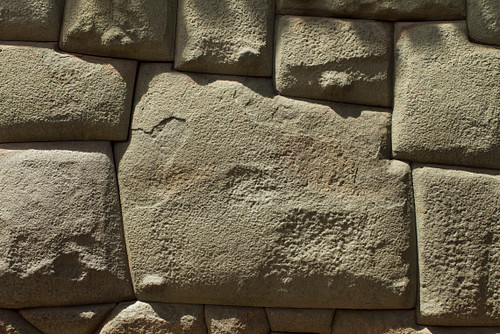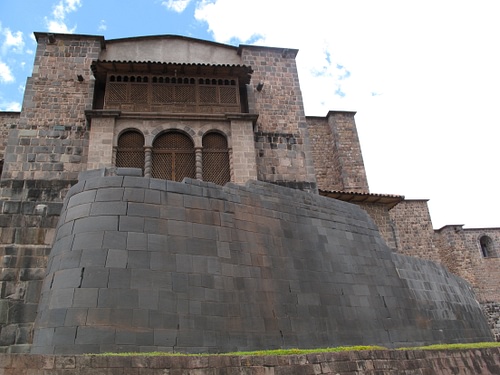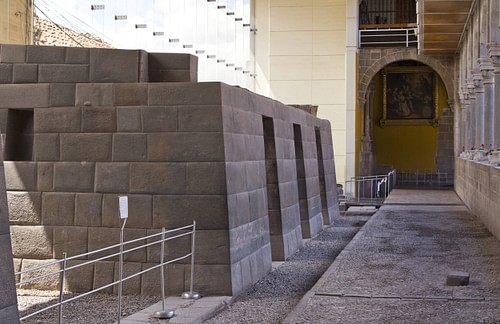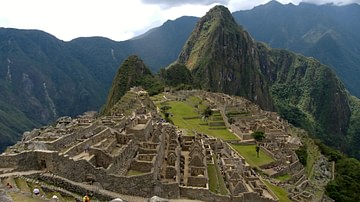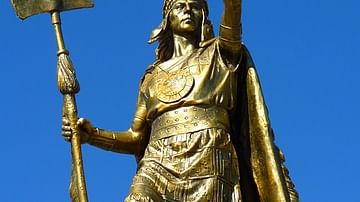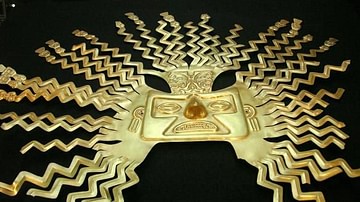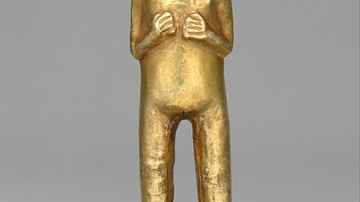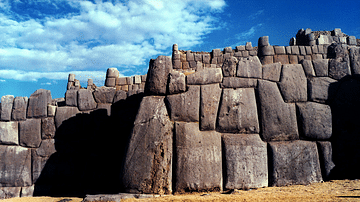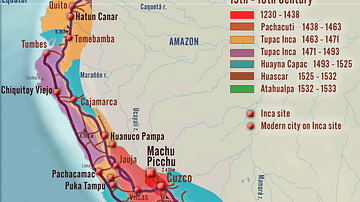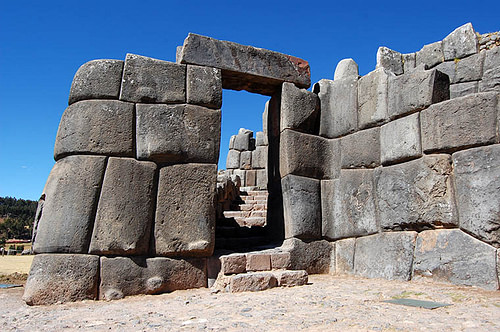
Cuzco (also Cusco or Qosqo) was the religious and administrative capital of the Inca Empire which flourished in ancient Peru between c. 1400 and 1534 CE. The Incas controlled territory from Quito to Santiago, making theirs the largest empire ever seen in the Americas and the largest in the world at that time. Cuzco, which had a population of up to 150,000 at its peak, was laid out in the form of a puma and was dominated by fine buildings and palaces, the richest of all being the sacred gold-covered and emerald-studded Coricancha complex which included a temple to the Inca sun god Inti. Cuzco is listed by UNESCO as a World Heritage Site.
Cuzco in Mythology
In mythology the Inca race was created by the great god Viracocha who caused them to be born from the sun god Inti. The first eight Incas were thus born at Tiwanaku or, in an alternative version, they emerged from the sacred Pacaritambo cave, and then they migrated down to the Cuzco valley. Led by Manco Capac (or Manko Qhapaq) and Mama Ocllo, the group fulfilled the earlier prophecy whereby they should settle where their golden staff could be easily driven into the ground. Before the Incas could prosper, though, they first had to defeat their local rivals, the Chanca, a feat they achieved with the help of stone giants, the pururaucas. This event did have a basis in reality, as the Incas did indeed defeat the Chanca in 1438 CE. Thus the Inca capital was established. The name Cuzco may derive from either qosqo, meaning 'dried-up lake bed' or cozco, a particular stone marker in the city.
Geography, Layout & Architecture
The geographical location of the site, on an ancient glacier lake bed and at a central point between natural routes leading off to diverse surrounding regions, was advantageous. The basin lies at an altitude of 3,450 metres and is surrounded by mountain peaks. Crops could be grown in the valley, and the hills provided good pasture. Cuzco is also the meeting point of three rivers - the Huatanay, Tullumayo, and Chunchul - making it especially significant and auspicious in the Inca mind. In typical Inca fashion, where nature was adapted but never abused, the rivers were canalized and diverted to create the space necessary for a large city.
First habitation of settled populations was actually as early as 500 BCE or earlier, and the main pre-Inca settlement was Chanapata. Decorated pottery survives from this period, but there is no evidence of large buildings, artworks, or metal. Similarly, there are no remains from the Tiwanaku period at the Cuzco site itself. Cuzco really began to take shape from around 1200 CE but only took on the grandeur of a capital during the reign of Inca Roca in the 14th century CE. From that point on each Inca ruler built his own palace, a great walled residential complex. In addition, from 1400 CE the Incas embarked on ambitious campaigns to conquer neighbouring territory, eventually building a huge empire with Cuzco as the administrative and religious capital.
The city saw a great period of re-building and expansion in the mid-15th century CE during the reign of Pachacuti Inca Yupanqui, known as 'Reverser of the World'. The swamp area in the north was drained, and the heart of the city moved there. Large ceremonial plazas were laid out, the Sacsayhuaman (or Saqsawaman) fortress, which protected the north of the city, was built, and the sacred Coricancha complex was rebuilt to more appropriately reflect the wealth and power of the Inca Empire. Other building works over time, which increased the spread of Cuzco to some 40 hectares, seem to have been less deliberately planned, resulting in an irregular shaped urban area.
The whole capital was built around four principal highways which led to the four quarters of the empire. The city was also laid out in the form of a puma (although some scholars dispute this and take the description metaphorically) with the imperial metropolis of Pumachupan forming the tail, the main plaza representing the body, and the temple complex of Sacsayhuaman forming the head. The entire city was also divided into two distinct parts called the hanan and hurin; the former, in the north, was higher in elevation and more prestigious than its lower, southern, counterpart. Five noble families occupied each sector. The centre was dominated by the double plazas of Haucaypata ('Terrace of Repose') and Cusipata ('Fortunate Terrace') which, covered in imported sand, hosted religious and state ceremonies. These would be presided over by the Inca king, seated on his carved stone throne on a raised platform, the usnu, which also had a pillar for taking sightings of celestial bodies. Here there was also a giant stone basin covered in gold into which were poured libations of chicha beer. Dominating the plaza was the Sunturwasi, a spire which was the tallest structure in Cuzco.
Incorporating kanchas (small groups of buildings organised around a courtyard all within a high-walled enclosure), vast plazas, parklands, sacred agricultural fields, shrines, fountains, and canals, yet with the narrow streets of a culture without wheeled vehicles, the city was largely reserved for priests, nobility, and administrators, while the farming and artisan communities were spread out beyond Cuzco's walls where there were also hundreds of qollqa storehouses which had a huge storage capacity. The city proper had a population of around 40,000 with another 200,000 in the surrounding area at the time of the Spanish conquest.
Cuzco was also an important component in the propaganda of Inca rule. It was encouraged to be venerated by Inca subjects as a sacred site. This policy also entailed tributes both in real value objects, such as gold and artworks, but also in people, either rulers and/or their family members kept as hostages, forcibly relocated artists and skilled craftsmen and women, and the provision of sacrificial victims. In addition, radiating out from Cuzco were 41 sacred sight lines (ceques) and well-paved roads which divided both space and time and reminded that Cuzco was the centre of the world. Finally, small models of Cuzco have been discovered across the empire which must have spread the news of the capital's great size and wealth.
Coricancha
Most splendid of Cuzco's buildings was the Coricancha (Qorikancha), with its temples (wasi) built in honour of Inti, the moon goddess Mama Kilya (Quilla), the creator god Viracocha, Venus or Chaska-Qoylor, the god of thunder Illapa, and finally one for Cuichu the rainbow god. Each wasi contained a cult statue of that particular god and precious art and religious objects connected to them. The Coricancha, also known as the Golden Enclosure, was thus the most sacred of all Inca sites and considered the very centre of the world.
Built using the fine masonry skills for which the Inca have rightly become famous, the massive walls of the complex were built from large stone blocks finely cut and fitted together without mortar. The interior buildings were of one storey and had thatched roofs. The doors were also covered in gold sheets, as were the interiors and exteriors of the various temples, and the inner side of the perimeter wall was even said to have been studded with emeralds. The temple to Inti, also known as the Temple of the Sun, was lined with 700 2 kg sheets of beaten gold, symbolizing the sweat of the god, and Mama Kilya's temple was similarly lined with silver, symbolizing the tears of the moon.
Inside the Temple of the Sun, besides golden artefacts relevant to the god's worship, was a gold statue of Inti encrusted with jewels. The statue represented Inti as a small seated boy called Punchao (Day or Midday Sun). Another important representation of the god - a giant mask with zigzag rays bursting from the head - was hung from the wall of an especially dedicated chamber within the temple. The garden of the temple was even more spectacular. Just as land - sometimes even entire regions - were dedicated to the god, so too, this garden was constructed in honour of the great sun god. Everything in it was made of gold and silver. A large field of corn and life-size models of shepherds, llamas, jaguars, guinea pigs, monkeys, birds, and even butterflies and insects were all crafted in precious metal. And if that wasn't enough to please Inti, there was also a large number of gold and silver jars all encrusted with precious stones. All that survives of these wonders are a few golden corn stalks, a convincing, if silent, testimony to the lost treasures of Coricancha.
The Coricancha also had a dedicated space for the mummified remains of former Inca emperors and their wives, known as mallquis. These were brought out of storage during special ceremonies such as those celebrating the solstices. There were also living quarters for priests and priestesses, and still other rooms of the complex were used as art and religious treasuries stuffed with artefacts taken from conquered peoples. These may well have been kept in order to guarantee compliance to Inca rule, just as conquered rulers were sometimes held hostage at Cuzco for periods of the year. Yet another interesting feature of the site was an underground channel through which sacred water flowed to the surrounding squares outside the complex.
Other important functions of the Coricancha included the taking of astronomical observations, especially of the Milky Way (Mayu). Sacrificial victims (capacochas) were also made ready for their great moment in the precinct's courtyard and then marched along the ceque lines to be sacrificed in the various provinces in honour of Inti and his living incarnation, the Inca emperor.
Sacsayhuaman
The fortress of Sacsayhuaman, built by Pachacuti, was likely first constructed using mud and clay, later to be replaced by magnificent stone work which employed huge finely cut blocks, many weighing over 100 tons. Designed by four architects (Huallpa Rimachi, Maricanchi, Acahuana, and Calla Cunchui) and built using 20,000 tribute labourers, the structure has three terraces set in zigzag fashion so that each wall has up to 40 segments which allowed the defenders to catch attackers in a crossfire. Only one small doorway on each terrace gave access to the interior buildings and towers on the hillside behind. The fortress was said to have had a capacity for 1,000 warriors. Following the collapse of the empire, most of the stones were re-used elsewhere, and the ruins were covered in earth to prevent their use by rebel forces.
Destruction
The Incas expanded their territory to such a degree that a mere 40,000 Incas controlled an empire of 10 million subjects. The Inca Empire was founded on, and maintained by, force which made the leaders unpopular with their subjects (especially in the northern territories), a situation that the Spanish Conquistadores, led by Francisco Pizarro, would take full advantage of in the middle decades of the 16th century CE. The Inca Empire also had to face various rebellions including a war in Ecuador where a second Inca capital had been established at Quito. Even more serious, the Incas were hit by an epidemic of European diseases such as smallpox which had spread from Central America even faster than the European invaders themselves, and the wave killed a staggering 65-90% of the population. Such a disease killed Wayna Qhapaq in 1528 CE and two of his sons, Waskar and Atahualpa, battled in a damaging civil war for control of the empire just when the European treasure-hunters arrived. It was this combination of factors - a perfect storm of rebellion, disease, and invasion - which ultimately brought the downfall of Cuzco and the mighty Inca Empire.
Cuzco was sacked, its main buildings either burned and destroyed or taken to pieces for reuse in new construction projects. Thus the once golden splendour of Inca Cuzco now, unfortunately, survives only in the eye-witness accounts of the first Europeans who marvelled at its architecture and riches and the odd stretch of Inca walls, especially the precisely cut supporting walls of the Dominican monastery.
